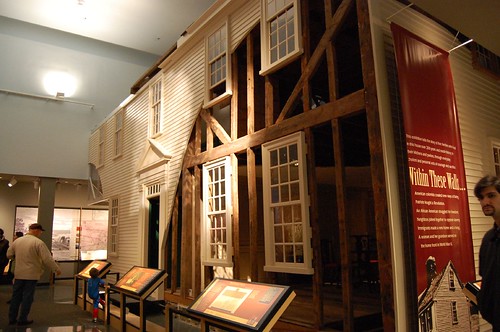This semester I am also fortunate enough to be taking a Digital Storytelling course, where occasionally the worlds of digital stories and Public History blend. The overall purpose feels similar - To tell a story effectually to a distant, virtual viewer. I think it is important to keep in mind while designing your online exhibition that the there are no walls, no architecture, and no museum staging to give the viewer that feeling they are standing in a museum. It is a website, and you have to make it feel as if it were a museum. Make them feel as it they were unlocking a door or opening a book.
 |
| "Within These Walls", DC Metrocentric, 2009. |
Speaking of websites, I am a little worried about creating mine for this project by the end of next month. I haven't had much experience in website design, but I want to make this project as effective to my viewers as the "Within These Walls" was to me. I've come to appreciate the significance of Public History much more... through the use of technology, we are keeping history alive and in the minds of today's society.
Works Cited:
Cohen, Daniel, and Roy Rosenzweig. "Digital History: A Guide to Gathering, Preserving, and Presenting the Past on the Web." Center for History and New Media. Web. 10 Mar. 2011. <http://chnm.gmu.edu/digitalhistory/>.
DC Metrocentric. Within These Walls. Digital image. DC Metrocentric Government. 28 Jan. 2009. Web. 10 Mar. 2011. <http://dcmetrocentric.com/category/government/page/6/>.
"Within These Walls - Home." National Museum of American History. Smithsonian Institute. Web. 10 Mar. 2011. <http://americanhistory.si.edu/house/home.asp>.
No comments:
Post a Comment